Advances in technology can help farmers balance soil nutrients and crop requirements with precision accuracy, while at the same time improving yields and farm outputs. While many of these technologies are expensive to purchase outright, they are nonetheless becoming more widely accessible to farmers via agri-contracting services.
Speaking at last week’s AgriSearch webinar, CAFRE’s Ronan Coll outlined examples of how such technologies can improve nutrient management on farm.
“The basis for every crop is to understand soil health. If soils are not in optimum condition for production, it will be difficult to get efficient use of nutrients applied using such technologies.
“Start with a soil testing programme. For most farmers, this will be carried out on a whole field approach, where sample results give a blanket fertiliser recommendation.
“However, within fields, there is variation in soil fertility and pH levels, so blanket treatments will over and under supply nutrients.
“GPS soil sampling breaks down each field into zoned sections and highlights the variation in soil fertility.
“This info can be programmed into the tractor, then used with GPS and variable rate applicators, targeting more nutrients to areas which are deficient and reduce applications where fertility is optimised.
“The technology has the potential to reduce the amount of fertiliser applied, or at least distribute the same quantity of nutrients in a much more efficient manner,” outlined Ronan.
Synching technology
GPS reduces the risk of overlapping when spreading fertiliser or chemical sprays, particularly on headlands and irregular shaped fields, providing cost savings and environmental benefits
“ISOBUS is a standard communication linking various tractor brands with variable rate applicators, making it more convenient for farmers to use multiple implements on one machine.
“Just make sure that the settings have been enabled for implements with sectional control on the home screen in the tractor,” Ronan said.
Real time analysis
Ronan went on to outline how CAFRE is using technology to give real-time analysis of organic manures applied to the farms at Greenmount.
“Slurry and farmyard manure vary in nutrient content and this in turn is affected by forward speed or spreading width, when applying to soils.
“At Greenmount, we are trialling machinery with on-board analytics using Near Infrared (NIR) systems that give real time monitoring of the amount of P and K applied to soils.
“The technology gives the required forward speed for travelling, based on the nutrient composition applied. It can also GPS soil maps to target more slurry where it is needed and vice versa. Ultimately, we are looking to reduce fertiliser where it is not needed, but ensure optimal rates where it is needed to maximise yields.”
Entry level
Not every farm can justify the capital expense of purchasing such technology, but there are smaller scale, low cost options which may fall within some farmers’ budget.
“Most farmers have access to a smartphone or tablet and they can be linked with bluetooth to basic GPS mapping devices that can be fixed to the bonnet of any tractor.
“They don’t offer auto-steer or precision accuracy mapping, but with the basic spreading width inputted, the apps can show the areas of the field which are being covered on the smartphone.
“Other basic technologies include plate meters. It is not new technology, but it is simple to use and measuring growth will give an insight into how crops are utilising soil nutrients,” Ronan concluded.
Implementing technology at farm level
Also speaking during the event was Co Down cereal farmer Richard Kane, who gave an insight into how technology is benefitting crops on his arable farm at Seaforde.
In recent years, Richard changed his outlook on the way nutrients are used on-farm, starting with lime.
“Something that stuck with me after completing the cereal challenge was the need for 500kg/ac of lime every year for the rate of nitrogen we use for growing arable crops.
“This was in line with what we were doing, spreading 2t/ac of lime every four years. But I started to rethink this. You wouldn’t apply all of your nitrogen in one go.
“So, we looked into variable rate technology for annual applications to target the right amount of lime to the right part of the field.
“A lot of the kit needed was already on the farm, with weigh cell fertiliser spreaders and GPS-enabled tractors. We just didn’t have the soils GPS mapped,” outlined Richard.
Starting point
In 2019, fields were GPS mapped with one sample taken per hectare. Richard gave the example of how in one 18ha field, there were 18 samples taken, whereas in the past, only one sample was taken for the whole area.
Under the old analysis, results showed soils at pH 6.0 for the entire 18ha, with P at index 3 and K at index 2+.
The GPS mapping indicated the same soils ranged from 6.0 to 6.95 for pH, with P and K ranging from index 2- to 4.
“The GPS maps immediately showed that we were not farming that field to its potential, as there was huge variation in the amount of nutrients required across the whole area.
“A new fertiliser plan was developed to improve the poorer areas of each field and build soil fertility.
“In terms of P requirement for the field, there are now areas that receive zero P and areas getting 153kg/ha. We aren’t necessarily saving fertiliser, just distributing it much better across the field.
“We use the SOYL mapping service, which costs £15/ha for a four year period. The rest of the machinery was already on-farm going back to 2009.
“Last year, with the price of fertiliser, we changed our nutrient plan to just apply what the crop needed, rather than applying enough fertiliser for the crop and build soil fertility. This saved 30t of muriate of potash alone, which adds up to a significant saving.”
With four years now elapsed, the farm will be remapped in 2023, with Richard hoping to see more cost savings filtering through.
Technology on beef and sheep farms
CAFRE’s Ciaran Hamill detailed how nutrient efficiency can be improved on beef and sheep farms, which traditionally use fewer inputs like fertiliser and chemicals compared to dairy and arable units.
Ciaran stressed the importance of soil health as the basis for nutrient management plans.
He advised farmers to walk underperforming fields and dig inspection holes to see if compaction or poor drainage were the issues before availing of high cost technologies or reseeding.
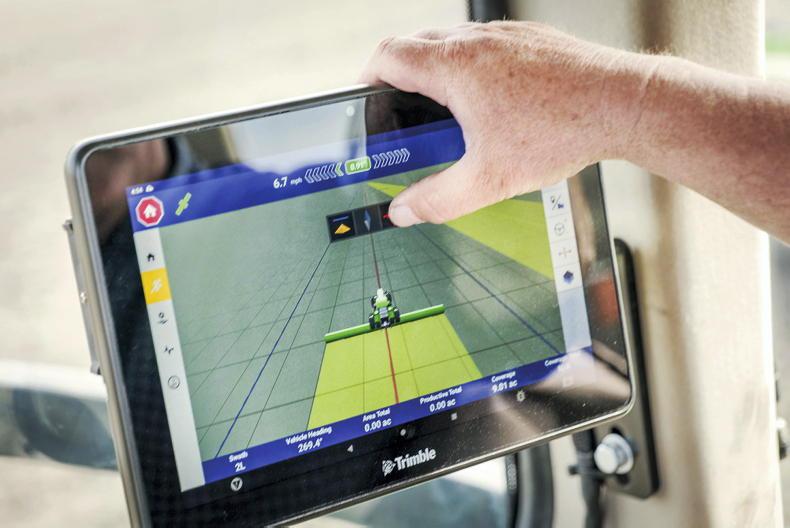
GPS maps can be used to provide precision nutrient application.
“Other things to look at include grazing strategy. Moving to a rotational paddock system where grass is rested can increase utilisation by 19% and farm output by 33%/ha from the same land base.
“It does come at a cost with additional infrastructure required, you do need the skills to manage grass it is more labour intensive, but when done right, it can increase farm output by as much as £656/ha.
“There is good science to back up the benefits of rotational grazing and the way it can improve production,” Ciaran stated.
Read more
Lakeland Dairies cuts milk price by 10%
Bord Bia needs to do more to push Irish lamb - IFA
Advances in technology can help farmers balance soil nutrients and crop requirements with precision accuracy, while at the same time improving yields and farm outputs. While many of these technologies are expensive to purchase outright, they are nonetheless becoming more widely accessible to farmers via agri-contracting services.
Speaking at last week’s AgriSearch webinar, CAFRE’s Ronan Coll outlined examples of how such technologies can improve nutrient management on farm.
“The basis for every crop is to understand soil health. If soils are not in optimum condition for production, it will be difficult to get efficient use of nutrients applied using such technologies.
“Start with a soil testing programme. For most farmers, this will be carried out on a whole field approach, where sample results give a blanket fertiliser recommendation.
“However, within fields, there is variation in soil fertility and pH levels, so blanket treatments will over and under supply nutrients.
“GPS soil sampling breaks down each field into zoned sections and highlights the variation in soil fertility.
“This info can be programmed into the tractor, then used with GPS and variable rate applicators, targeting more nutrients to areas which are deficient and reduce applications where fertility is optimised.
“The technology has the potential to reduce the amount of fertiliser applied, or at least distribute the same quantity of nutrients in a much more efficient manner,” outlined Ronan.
Synching technology
GPS reduces the risk of overlapping when spreading fertiliser or chemical sprays, particularly on headlands and irregular shaped fields, providing cost savings and environmental benefits
“ISOBUS is a standard communication linking various tractor brands with variable rate applicators, making it more convenient for farmers to use multiple implements on one machine.
“Just make sure that the settings have been enabled for implements with sectional control on the home screen in the tractor,” Ronan said.
Real time analysis
Ronan went on to outline how CAFRE is using technology to give real-time analysis of organic manures applied to the farms at Greenmount.
“Slurry and farmyard manure vary in nutrient content and this in turn is affected by forward speed or spreading width, when applying to soils.
“At Greenmount, we are trialling machinery with on-board analytics using Near Infrared (NIR) systems that give real time monitoring of the amount of P and K applied to soils.
“The technology gives the required forward speed for travelling, based on the nutrient composition applied. It can also GPS soil maps to target more slurry where it is needed and vice versa. Ultimately, we are looking to reduce fertiliser where it is not needed, but ensure optimal rates where it is needed to maximise yields.”
Entry level
Not every farm can justify the capital expense of purchasing such technology, but there are smaller scale, low cost options which may fall within some farmers’ budget.
“Most farmers have access to a smartphone or tablet and they can be linked with bluetooth to basic GPS mapping devices that can be fixed to the bonnet of any tractor.
“They don’t offer auto-steer or precision accuracy mapping, but with the basic spreading width inputted, the apps can show the areas of the field which are being covered on the smartphone.
“Other basic technologies include plate meters. It is not new technology, but it is simple to use and measuring growth will give an insight into how crops are utilising soil nutrients,” Ronan concluded.
Implementing technology at farm level
Also speaking during the event was Co Down cereal farmer Richard Kane, who gave an insight into how technology is benefitting crops on his arable farm at Seaforde.
In recent years, Richard changed his outlook on the way nutrients are used on-farm, starting with lime.
“Something that stuck with me after completing the cereal challenge was the need for 500kg/ac of lime every year for the rate of nitrogen we use for growing arable crops.
“This was in line with what we were doing, spreading 2t/ac of lime every four years. But I started to rethink this. You wouldn’t apply all of your nitrogen in one go.
“So, we looked into variable rate technology for annual applications to target the right amount of lime to the right part of the field.
“A lot of the kit needed was already on the farm, with weigh cell fertiliser spreaders and GPS-enabled tractors. We just didn’t have the soils GPS mapped,” outlined Richard.
Starting point
In 2019, fields were GPS mapped with one sample taken per hectare. Richard gave the example of how in one 18ha field, there were 18 samples taken, whereas in the past, only one sample was taken for the whole area.
Under the old analysis, results showed soils at pH 6.0 for the entire 18ha, with P at index 3 and K at index 2+.
The GPS mapping indicated the same soils ranged from 6.0 to 6.95 for pH, with P and K ranging from index 2- to 4.
“The GPS maps immediately showed that we were not farming that field to its potential, as there was huge variation in the amount of nutrients required across the whole area.
“A new fertiliser plan was developed to improve the poorer areas of each field and build soil fertility.
“In terms of P requirement for the field, there are now areas that receive zero P and areas getting 153kg/ha. We aren’t necessarily saving fertiliser, just distributing it much better across the field.
“We use the SOYL mapping service, which costs £15/ha for a four year period. The rest of the machinery was already on-farm going back to 2009.
“Last year, with the price of fertiliser, we changed our nutrient plan to just apply what the crop needed, rather than applying enough fertiliser for the crop and build soil fertility. This saved 30t of muriate of potash alone, which adds up to a significant saving.”
With four years now elapsed, the farm will be remapped in 2023, with Richard hoping to see more cost savings filtering through.
Technology on beef and sheep farms
CAFRE’s Ciaran Hamill detailed how nutrient efficiency can be improved on beef and sheep farms, which traditionally use fewer inputs like fertiliser and chemicals compared to dairy and arable units.
Ciaran stressed the importance of soil health as the basis for nutrient management plans.
He advised farmers to walk underperforming fields and dig inspection holes to see if compaction or poor drainage were the issues before availing of high cost technologies or reseeding.

GPS maps can be used to provide precision nutrient application.
“Other things to look at include grazing strategy. Moving to a rotational paddock system where grass is rested can increase utilisation by 19% and farm output by 33%/ha from the same land base.
“It does come at a cost with additional infrastructure required, you do need the skills to manage grass it is more labour intensive, but when done right, it can increase farm output by as much as £656/ha.
“There is good science to back up the benefits of rotational grazing and the way it can improve production,” Ciaran stated.
Read more
Lakeland Dairies cuts milk price by 10%
Bord Bia needs to do more to push Irish lamb - IFA






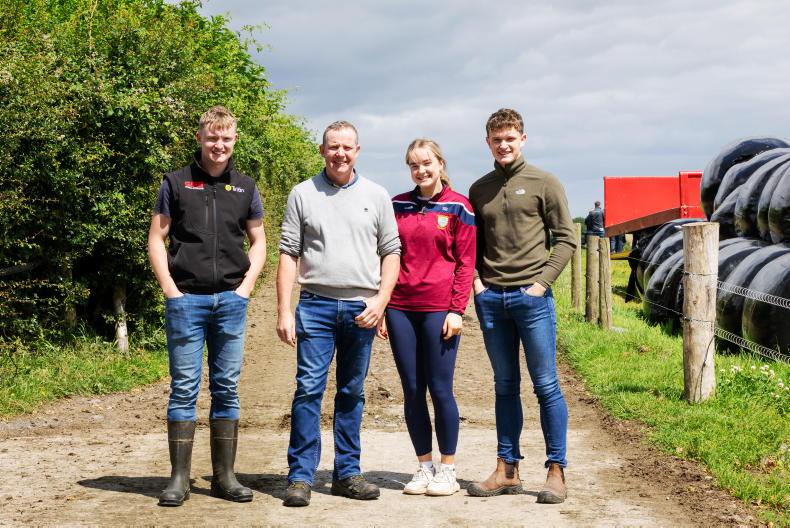

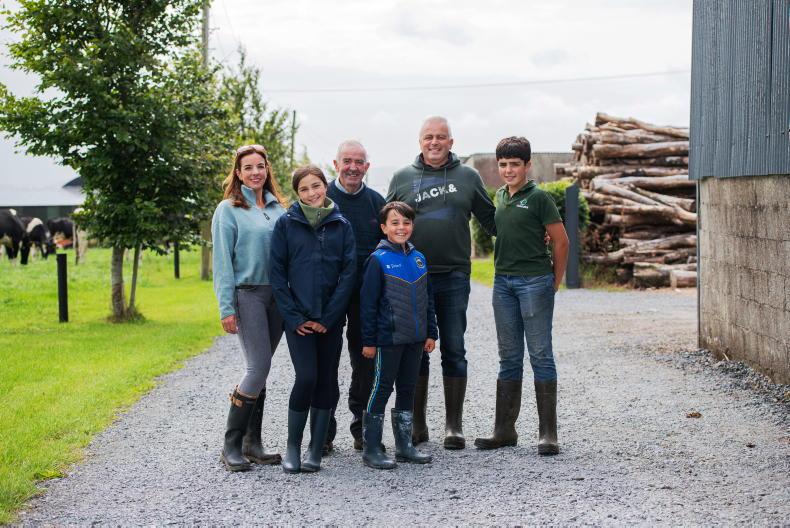
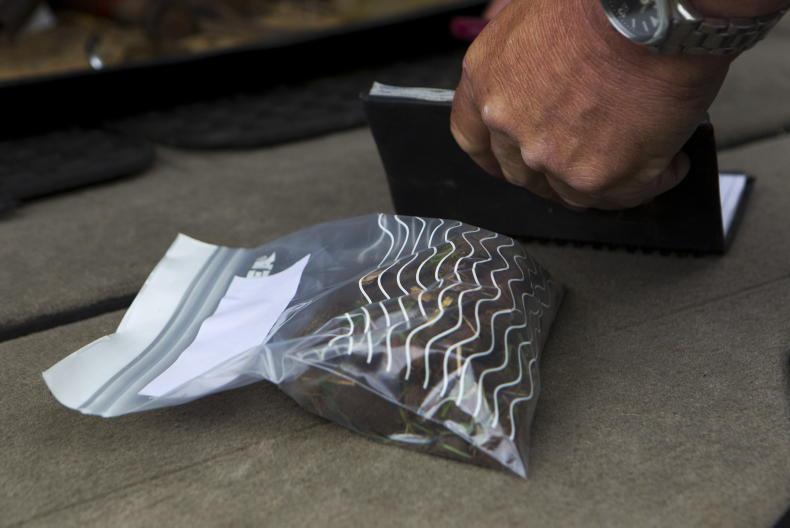
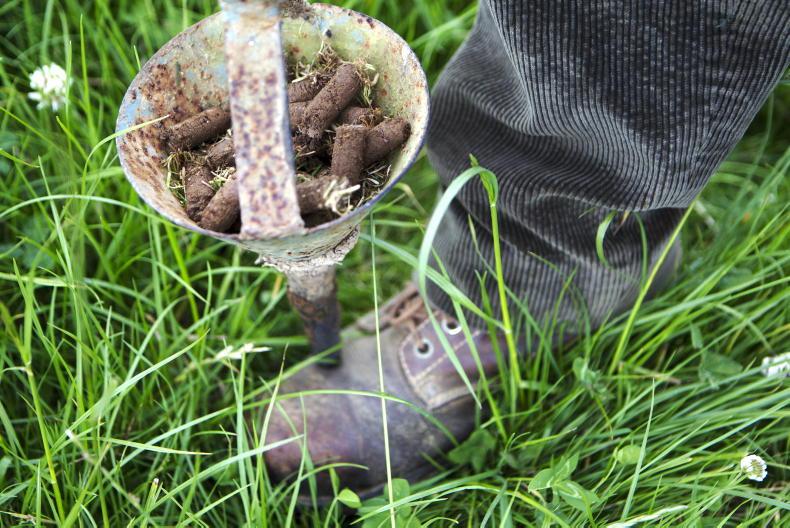
SHARING OPTIONS